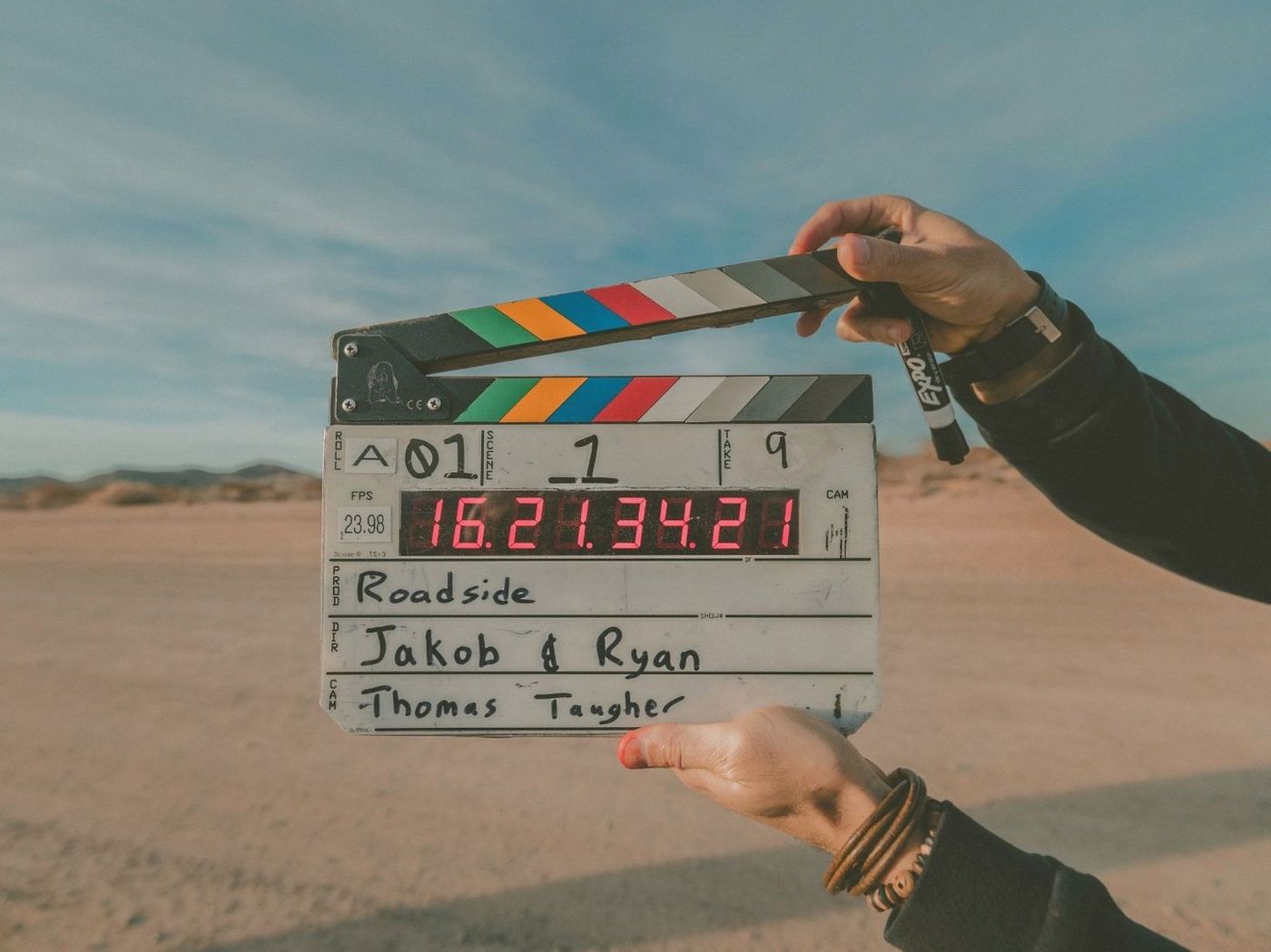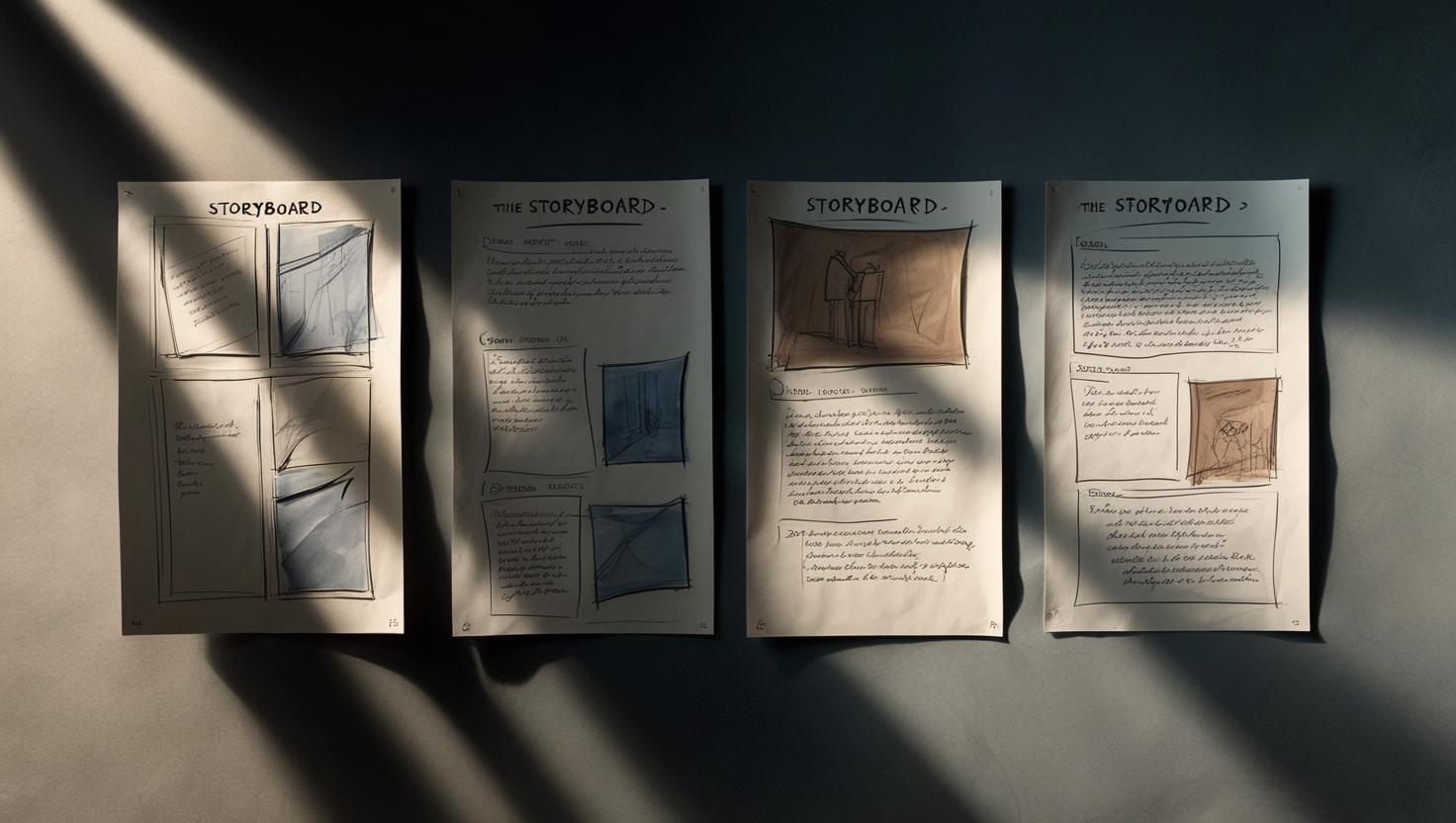Writing a successful video script can be a challenge. The number of online videos used for marketing, corporate videos, websites and e-learnings continues to rise sharply. Not surprisingly, because it allows you to convey something in a short time and in an attractive way. From a video snippet of a few seconds to an hour-long tutorial. But with this increase in videos, the challenge of rising above it with your production also increases. The solution? A super strong script. That is the basis of your success. In this blog, we will tell you how to create a video that meets your objective. Whether that’s lead generation, education or brand awareness.
Tip 1: A thorough briefing is half the script
Whether you are going to make a web video, corporate video or e-learning: you need a script to define the form and content. But before you sit down at your laptop, or ask someone else to do it for you, you need a clear briefing. This step is often underestimated. But it is in this phase that you make choices that will determine the success of the final product.
A good briefing bridges the gap between the objective you have for your video and the needs of the target audience. Make your objective as concrete as possible. Preferably quantified, so it is measurable whether your objective has been achieved. Think, for example, of the desired number of downloads, contact requests or sales. Or a change in knowledge, attitude or behaviour that you would like to see in your target group.
After this you can dive deep into your target group. What sort of individuals are they? How do their lives differ from one another? On which conclusions are you able to draw from them? How are their unique needs in connection to your offer? Name the frustrations, barriers and obstacles your target group experiences when it comes to your service or product. In doing so, find the solutions your company or product can offer them. Now you have a good starting point for the perfect script.
To do’s at this stage:
– Define your purpose and target audience
– State which problem you are solving
– What do you want your target audience to know, think, do?
– Research on which channel you have the best reach
Tip 2: Tell a story
‘Don’t ruin a good story with facts’ the English jokingly say. There is certainly some truth in that, because a list of facts and figures does not warm anyone up. At best, these serve to support your story. That story is all about emotion. Project what you want to tell onto one or more main characters.
Describe the journey these people make from past to present, or from present to future. How do they view your topic? Which challenges and pain points do they experience? What have they already tried, or what might they try, to solve their problem? Are there benefits and drawbacks? And why is the option you offer the best?
Tell that story with fervour. Using drama. If possible, with humor and self-deprecation. Only when adding spectacle and exaggeration makes a bigger impact. With tenderness and subtlety, if that suits your brand. And don’t forget to end with a good call to action: a call for your viewer to do something now with what they have just seen.
In short, find the storytelling style that is most powerful for your video.
To do’s at this stage:
– Wrap your message up in an engaging story
– Ensure a good ratio between logic and emotion
– Take the viewer on a journey
– Think about the desired call to action
Tip 3: Use normal human language
Business, or B2B videos in particular, often still use language that is far removed from how people normally communicate with each other. It sounds distant, formal, impersonal. Jargon is used to indicate that people know what they are talking about. The question is whether that is the best approach.
Rather, opt for conversational selling. Keep it simple, as if you were talking to someone on the golf course, a party or a networking reception. That will make your message understandable and human; which is what a first contact with a potential new customer is all about.
To do’s at this stage:
– Rewrite your story in spoken language
– Make it personal
– Keep it understandable
– Avoid jargon
Tip 4: Shorter is better
One of the pitfalls of making videos is cramming in way too much information. as if a video could be infinitely long. Which videos do you prefer to watch yourself? The ones with short, powerful and engaging stories, right?
As a rule of thumb, stick to telling a maximum of 3 things in a video that is no longer than 3 minutes. If it can be done in 1 or 2 minutes, that’s even better. Of course, a training video can be longer. Use this as a structure: explain what you are going to say, say it and summarise what you have said. Each video should have slightly different wording and different images, of course.
Especially with pre-rolls on YouTube, it is crucial that the first 5 to 10 seconds ensure that the viewer keeps watching. You can achieve this by making a promise, asking a question, posing a stimulating proposition, or building in a teaser or cliffhanger. But really, for any corporate film, web video or e-learning, the intro is the most important part of your video.
To do’s at this stage:
– Say it in a unique way
– Keep it short and simple
– Delete all the superfluous information
– Ensure a banging start
Tip 5: Show, don’t tell
Your narrative or storyline is the good basis for your script. Once you know what the storyline will be, you can start looking at how to break it down into images, actors’ actions and dialogue, aka voice over. Also, where you could add illustrations, animations and titles, or even music/sound effects to make the video complete.
This way, you create something people love to watch. Avoid duplicating things: so show what you don’t tell and tell what you don’t see. Remember that writing a good video script is a skill in itself, so don’t hesitate to enlist the help of a professional.
To do’s at this stage:
– Make use of all image and sound options
– Show what you don’t tell
– Tell what you don’t show
– Ask for help from professionals

Tip 6: Check your script
After much writing, scrapping and polishing (and more scrapping and polishing), do you have a script you really like? If so, first read the dialogue and voice over aloud to check whether it sounds logical and credible. Whether it has a nice ring to it, so to speak.
Also have your script read by your colleagues, or if possible by customers or potential relations. This way, you will get the last bumps out of your script and be ready for production. Also, check that all points from the briefing have been included.
To do’s at this stage:
– Check that all text fits within the length of your video
– Read it out loud
– Let others take a look
– Ensure sufficient impact
Tip 7: Producing and optimising
A good briefing and a tight script are crucial for a convincing video. But even when producing, there is still much to optimise. On location or in the Amsterdam recording studio, experienced actors, voice overs and voice actors are of great help. They bring your words to life. A small change in the text, another word or a certain intonation can make a big difference.
Of course, the same goes for what you put on the screen and how you do it. Cinematography, framing, use of colour; there are many factors that, combined, ensure success. Especially in the editing phase, when all the pieces of the puzzle fall together, you realise that there is often a lot to improve on your video.
To do’s in this phase:
– Listen to input from voice overs
– Draw on the experience of videographers
– Keep optimising during each step of the process
– Pay extra attention to editing
Tip 8: Give your video impact
A professional script writer’s toolbox is full of tools that give stories and videos more impact. One of those insider tricks is: the reversed setup. This means that you don’t tell your story chronologically, but in a completely different and more surprising order.
Don’t start with a topic, after which you present argument a, b and c as justification. You make a different start. The conclusion is where you begin. This works surprisingly and disruptively. If you do it well, your listeners can hardly escape your story. After all, it is human to want to know how something ends.
If we are presented with a conclusion, we want to know where it comes from. While thinking up your video, you might find yourself staring at a blank screen, searching for something compelling to say about your product, service or brand. Sometimes you don’t know where to start or you think there is nothing interesting to say.
Write down point by point what you want to say, put a conclusion under it and then run that in reverse. Even if the conclusion is “you see, so we have something new”. Something new? Tell it.
To do’s at this stage:
– First write down your story from A to Z
– Then turn it around
– Make Z the intriguing beginning of your film
– Take the viewer to A
Tip 9: Video seen, now what?
The briefing is great. The script is great. The video is great. Success guaranteed? Well, not quite yet. You know how it goes when you watch a video. The moment it ends, your attention is already drawn to something else. So, you want the viewer to experience something in the last seconds of your story that will make them take action immediately.
That is not something that comes out of the blue at that moment. You have carefully built towards that. The trick here is to get the viewer into “yes” mode. To finally say yes to what you are asking of them, you start with a series of questions, statements and arguments that they cannot help but say yes to.
For example, when asked if you love your children a lot, almost every parent will say yes. So will making the statement that your children’s safety is the most important thing. So will the fact that your biggest fear is that something will happen to your kids. Next, your viewer will quickly agree with you that he needs a safe car and his children need to ride a safe bike.
All you have to do now is make sure it is easy for the viewer to carry out the action:
Click here. Schedule an appointment in the online calendar right away. Sign up using this link. Etc.
To do’s at this stage:
– Think about what action you want from the viewer
– Put the viewer in “yes” mode throughout the video
– Name the desired action concretely
– Make it easy to perform the action
Tip 10: Produce professionally
Whether you produce your video yourself or with others, make sure you have professional people and equipment. A sound engineer ensures that all voices are clearly audible, without disturbing background noise. This is where videos still very often go wrong. An experienced director thinks in images and helps tell your story as concisely and powerfully as possible.
Professional voice overs make your text sound convincing through small intonations, tempo changes and voice inflections. In short, it is worth the investment to work with professionals.
It will definitely improve the effectiveness and efficiency of your video. Especially with online videos, the effect is perfectly measurable, so make sure you have arranged that too because you will learn a lot from this for your next videos.
To do’s at this stage:
– Go for a professional audio production
– Take advantage of top direction, sound and editing
– Invest in quality
– Take care of effect measurement
More tips?
You can read many more tips in the e-book Voicebooking published on scriptwriting:
‘Voice over scripts that convince: 52 tips for writing persuasive scripts’.
Good luck and have fun producing your videos!




